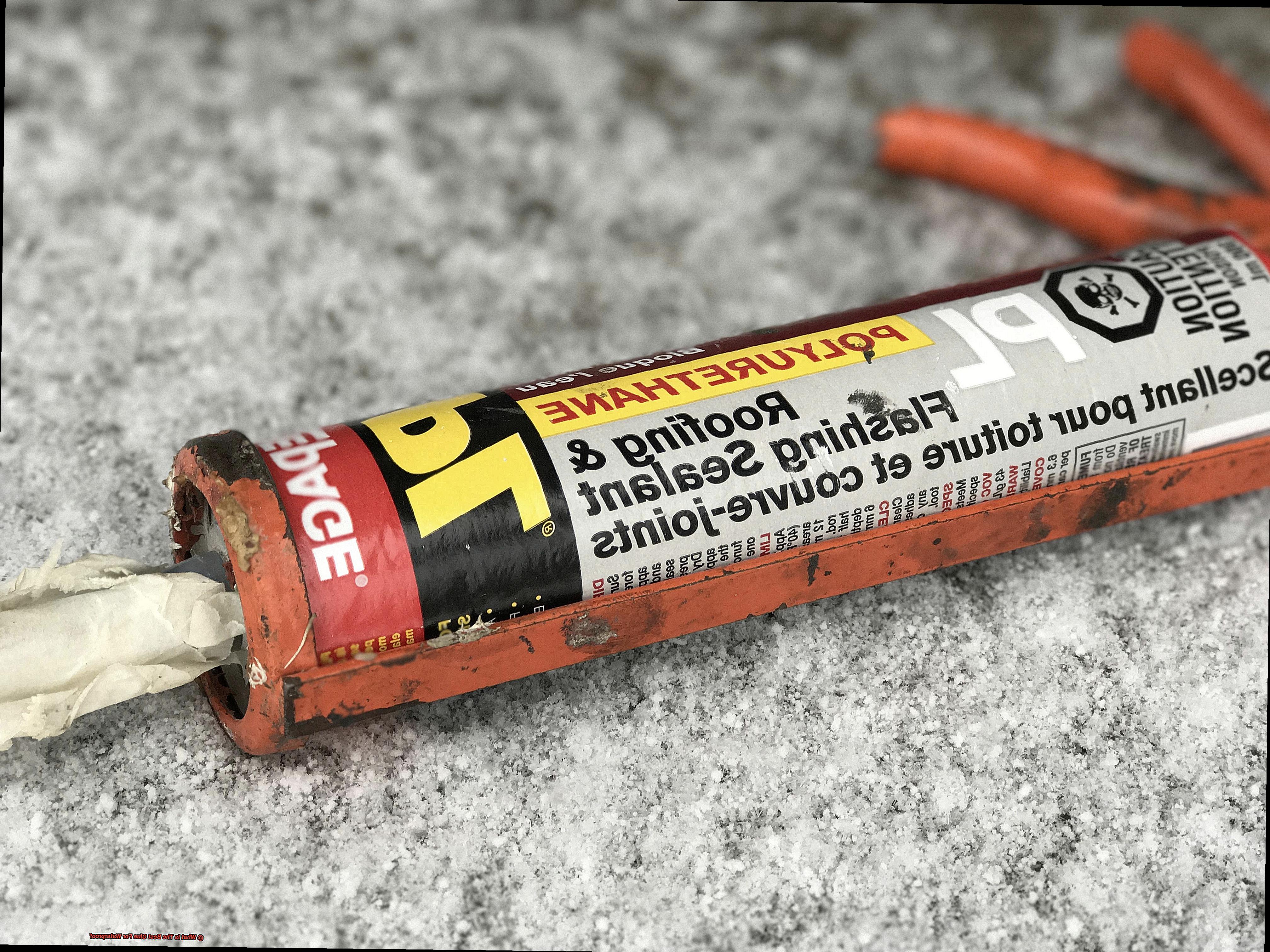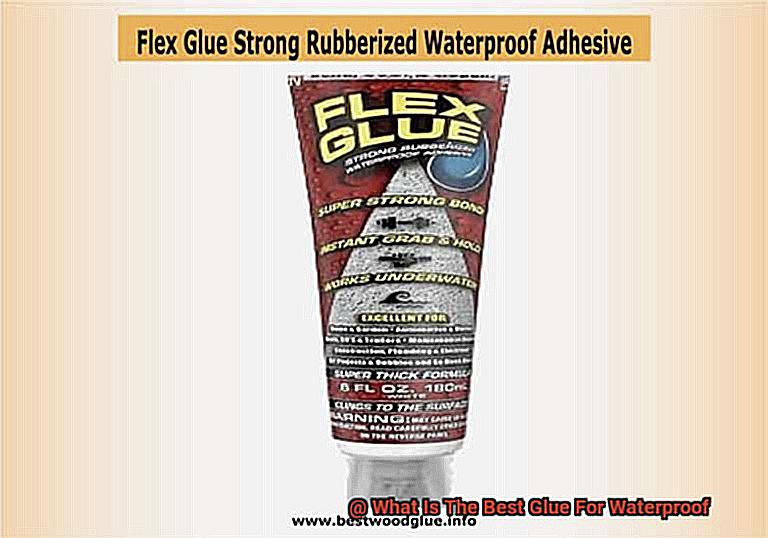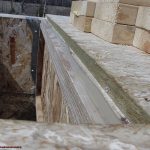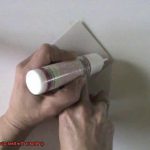Are you a DIY enthusiast who loves to create water-resistant items but struggles to find the right adhesive? Or maybe you’re a professional in the construction industry who frequently requires waterproof adhesion? If so, you know how important it is to choose the best glue for waterproof. Not all adhesives are created equal, and using the wrong one can lead to disastrous results.
Waterproof glue is a game-changer when it comes to materials exposed to moisture. It prevents them from weakening and losing their cohesion, ensuring that your project lasts longer. But with so many products on the market, selecting the right glue for your project can be overwhelming.
Don’t worry – we’ve got your back. In this blog post, we’ll explore everything you need to know about the best glue for waterproof. We’ll introduce you to different types of waterproof glues, including polyurethane, epoxy, cyanoacrylate, and silicone. Each type has its strengths and weaknesses, making them suitable for specific applications.

Our comprehensive guide will provide helpful insights on how to choose the right adhesive for your project. We’ll discuss tips for proper usage and highlight some common mistakes that people make when using waterproof glue.
Whether you’re building a waterproof boat, repairing a leaky pipe or creating a waterproof device, our guide will help ensure that your project is successful. So let’s dive into the exciting world of waterproof adhesive and discover how it can make your life more convenient.
Types of Glue for Waterproofing
Contents
- 1 Types of Glue for Waterproofing
- 2 Advantages and Disadvantages of Epoxy
- 3 Advantages and Disadvantages of Polyurethane
- 4 Advantages and Disadvantages of Cyanoacrylate (Super Glue)
- 5 Factors to Consider When Choosing the Best Glue for Waterproofing
- 6 Application Tips for Using Waterproof Glue
- 7 Conclusion
When it comes to waterproofing, the glue you choose can make all the difference. With so many different types of adhesives available in the market, it can be overwhelming to choose the most suitable one for your specific needs. But fear not. In this article, we will discuss some of the most commonly used types of glue for waterproofing, so you can make an informed decision.
Let’s start with epoxy glue. This two-part adhesive is known for its excellent bonding strength and water resistance. It creates a strong bond that can withstand exposure to water and other harsh environmental conditions. Epoxy glue is ideal for bonding materials such as metal, plastic, and wood, making it a top choice for construction projects that require a strong and reliable bond.
Next up is polyurethane glue. This one-part adhesive is easy to apply and has excellent bonding strength. It can be used on a variety of materials, including wood, metal, and plastic. What sets polyurethane glue apart from other adhesives is that it expands as it dries, filling in any gaps or cracks in the material being bonded. This makes it a great choice for projects where a tight seal is crucial.
Silicone adhesive is another popular option for waterproofing. It’s a type of sealant that’s commonly used for sealing gaps and joints in areas such as bathrooms, kitchens, and roofs. Silicone adhesive is flexible and can withstand exposure to water and other harsh environmental conditions, making it perfect for outdoor projects where weather resistance is essential.
Last but not least is contact cement. This type of adhesive creates an instant bond when two surfaces are pressed together. It has excellent bonding strength and can withstand exposure to water and other harsh environmental conditions. Contact cement is ideal for bonding materials such as rubber, leather, and metal.
Advantages and Disadvantages of Epoxy
Look no further than epoxy. As an expert in waterproofing adhesives, I can tell you that epoxy is one of the most popular types of adhesives available. It’s a two-part adhesive that consists of a resin and a hardener that are mixed together to create an incredibly strong, durable bond. But what are the advantages and disadvantages of using epoxy? Let’s take a look.
Advantages of Epoxy:
One of the biggest advantages of using epoxy is its ability to provide a strong, permanent bond even in extremely wet conditions. Epoxy is known for its excellent resistance to water and moisture, making it a top choice for sealing leaks, repairing cracks, and bonding a wide range of materials, including metal, plastic, wood, and concrete. Additionally, it can withstand exposure to harsh chemicals and extreme temperatures, making it ideal for use in industrial settings.
Another huge advantage of epoxy is its versatility. It comes in a range of formulas designed for different applications. For example, marine-grade epoxy is perfect for boats and underwater repairs, while high-temperature epoxy is suitable for automotive and aerospace applications. Epoxy can also be tinted or colored to match the surrounding materials, making it ideal for cosmetic repairs.
Disadvantages of Epoxy:
While there are many advantages to using epoxy, there are also some drawbacks. One significant disadvantage is its high cost compared to other types of adhesives. Epoxy can be expensive, especially when used on large projects. Additionally, it can be messy and difficult to work with if not applied properly. It requires special handling and storage to ensure maximum effectiveness.
Another disadvantage of using epoxy is its long curing time. It can take several hours or even days to fully cure, depending on the type of epoxy used. This can be inconvenient if you need your project completed quickly.
Advantages and Disadvantages of Polyurethane
Polyurethane is a versatile adhesive that has become a popular choice for waterproofing and bonding in the construction industry. However, like any other adhesive, it has its advantages and disadvantages.
One of the biggest advantages of polyurethane is its ability to resist water and moisture, making it ideal for applications that require waterproofing. Polyurethane also creates a strong bond that can withstand heavy loads and extreme temperatures, making it a reliable choice for construction projects. Additionally, it can be used on a variety of surfaces, including wood, metal, plastic, and concrete. Once cured, polyurethane forms a tough and durable bond that can last for years.
However, polyurethane emits toxic fumes during the curing process that can be harmful if inhaled. It’s crucial to ensure proper ventilation when working with this adhesive. Another disadvantage is its longer curing time compared to other adhesives, which can be inconvenient for some applications. Once cured, polyurethane is also difficult to remove or clean up from surfaces. Lastly, it’s generally more expensive than other types of adhesives.
Advantages and Disadvantages of Cyanoacrylate (Super Glue)
As a self-proclaimed adhesive aficionado, I am here to provide you with a comprehensive guide on the advantages and disadvantages of using cyanoacrylate, commonly known as Super Glue, for waterproofing applications.
Let’s dive into the advantages first. One of the most significant benefits of cyanoacrylate is its lightning-fast drying time. This adhesive can bond almost instantly upon contact with moisture, making it an ideal option for quick repairs or emergency situations. Moreover, it forms a robust and long-lasting bond that can withstand harsh conditions, including exposure to water.
Another advantage of cyanoacrylate is its versatility. It can be used on a variety of surfaces, including metal, plastic, rubber, and ceramic. This makes it a popular choice for numerous applications.
However, there are some disadvantages to consider before using cyanoacrylate as your go-to adhesive for waterproofing purposes. One of the main drawbacks is its brittleness. While it may form a strong bond initially, it can easily crack or break under stress or impact. As a result, it may not be the best option for surfaces exposed to constant movement or flexing.
The potential toxicity of cyanoacrylate is another disadvantage to keep in mind. Ingestion or inhalation of this adhesive can cause irritation to the eyes, skin, and respiratory system. Therefore, users should handle this adhesive with caution and avoid prolonged exposure.
Factors to Consider When Choosing the Best Glue for Waterproofing
Choosing the right adhesive is crucial for ensuring long-lasting results. However, with so many options available, it can be challenging to determine which one is the best fit for your specific needs. As an expert in this field, I have compiled a list of factors that you need to consider when choosing the best glue for waterproofing.
Firstly, consider the type of material that you want to bond. Different types of glues work better on certain materials than others. It’s essential to choose a glue that is compatible with the material you want to bond. For instance, some adhesives work better on plastic, while others are more suitable for metal surfaces. When selecting a glue, make sure to check if it’s appropriate for the material you’re working with.
Secondly, check if the glue is specifically designed for waterproofing and can withstand exposure to water or moisture. Not all glues are water-resistant, and some may lose their adhesive properties when exposed to water. Therefore, it’s crucial to choose a glue that is specifically designed for waterproofing. Opting for a waterproof adhesive will ensure that your project remains secure even when exposed to water or moisture.
Thirdly, consider the application method required for the glue. Some glues require a specific application method such as spraying, rolling, or brushing. It’s vital to choose a glue that is easy to apply and suits your project requirements. Choosing an adhesive with a suitable application method will ensure that your project turns out precisely the way you envisioned it.
Fourthly, check the drying time of the glue. The drying time of the glue is also an essential factor to consider. If you’re working on a large project and need the glue to dry quickly, choose an adhesive with a short drying time. On the other hand, if you have ample time on your hands or are working on a smaller project, you can choose a glue with a longer drying time.
Finally, consider the strength of the glue. Some adhesives are designed for light-duty applications, while others are suitable for heavy-duty projects that require high bonding strength. Selecting the right adhesive strength is crucial for ensuring that your project remains secure and water-resistant.
Application Tips for Using Waterproof Glue
Using waterproof glue can be the solution to your problems, but it’s important to apply it correctly in order to achieve a strong and long-lasting bond. Here are five application tips to keep in mind when using waterproof glue.
Clean and Dry Surfaces
The first and most important step is to ensure that the surfaces you want to bond are clean, dry, and free from any oil or grease. Any residue can prevent the glue from adhering properly, which could compromise the waterproof seal. Be sure to clean your surfaces thoroughly with a degreaser or other cleaning solution before starting to glue.
Apply the Glue Evenly and Thinly
When applying the glue, it’s crucial to do so evenly and thinly. Too much glue can create excess bulk and reduce the effectiveness of the bond. Use a small brush or applicator for greater precision and control, and apply enough glue to create a strong bond without excess oozing out from between the surfaces.
Clamp or Secure the Surfaces
After applying the glue, clamp or press the surfaces together firmly. This helps to ensure that the glue spreads evenly and creates a strong bond. Depending on the type of waterproof glue you’re using, you may need to clamp the surfaces together for several hours or even overnight.
Follow Manufacturer’s Instructions
Different types of waterproof glue may have different application tips and requirements, such as specific temperature ranges or drying times in order to achieve maximum strength. Be sure to read the instructions carefully and follow them closely for best results.
Be Prepared for Cleanup
Finally, it’s worth mentioning that once waterproof glue has dried, it can be difficult to remove from skin or clothing. Avoid getting glue on yourself or your clothes, and be prepared to clean up any excess glue immediately with a damp cloth or paper towel.
Also Read: What is the best waterproof glue sealer?
Conclusion
In conclusion, selecting the right adhesive for waterproofing is paramount to guaranteeing the longevity and durability of your project. The sheer number of options can be overwhelming, but with a little knowledge about the various types of glue available and their benefits and drawbacks, you can make an informed decision.
Epoxy, polyurethane, cyanoacrylate (super glue), and silicone are some of the most commonly used types of glue for waterproofing. Each type has its own set of strengths and weaknesses that make it suitable for specific applications. Considerations such as the material being bonded, application method, drying time, strength of the glue, and whether it’s specifically designed for waterproofing must all be taken into account.
When working with waterproof glue, it’s critical to adhere to application tips such as cleaning and drying surfaces thoroughly before applying a thin layer evenly. Clamping or securing surfaces together is also crucial in achieving a strong bond. Following manufacturer’s instructions is equally important.
In summary, by understanding the different types of waterproof glue available and following proper application techniques, you can ensure that your project remains secure even when exposed to water or moisture.






